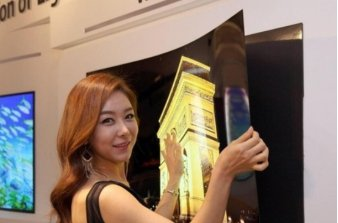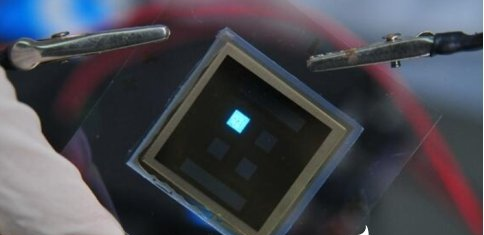What are the advantages and disadvantages of OLED?
advantage
1. The thickness can be less than 1 mm, only 1/3 of the LCD screen, and the weight is lighter;
2. The solid-state mechanism has no liquid substances, so the seismic performance is better, and it is not afraid of falling;
3. There is almost no problem with the viewing angle. Even when viewed from a large viewing angle, the picture is still not distorted;
4. The response time is one-thousandth of LCD, and there will be no smearing phenomenon when displaying moving pictures;
5. The low temperature characteristic is good, and it can still display normally at minus 40 degrees, but the LCD cannot do it;
6. The manufacturing process is simple and the cost is lower;
7. Higher luminous efficiency and lower energy consumption than LCD;
8. It can be manufactured on substrates of different materials, and can be made into a flexible display that can be bent.
Disadvantages
1. The lifespan is usually only 5000 hours, which is lower than the LCD lifespan of at least 10,000 hours;
2. Mass production of large-size screens cannot be achieved, so it is currently only applicable to portable digital products;
3. There is a problem of insufficient color purity, and it is not easy to display bright and rich colors.
Road to TV technology revolution OLED replaces LCD?
The characteristics of OLED are self-illumination, no backlight support, and high contrast, uniform brightness, wide color gamut and viewing angle.
Secondly, OLED has low voltage demand, and it has the characteristics of fast response, thin thickness, simple structure, high efficiency and light weight. It may not be fixed in a glass panel like an LCD. In theory, as long as a flexible substrate material is used, such as a flexible material such as plastic or metal foil, the appearance of the OLED screen can be changed.
As long as the flexible substrate material is used, the appearance of the OLED screen can be changed.

Why is OLED short-lived?
Because OLED needs three materials of R, G, and B to be stimulated by current to actively emit light, and the three materials have different aging degrees. After a period of time, the brightness of the decayed material decreases quickly, and the screen will produce color cast.
The reason is that technically, the problems of B material (even R material) and life and stability cannot be solved, so it is necessary to borrow G materials (because it is the most reliable and durable) and R and B materials Mixed use of 2:1, G pixel as the main pixel, driven by a larger current, resulting in higher brightness; the relative reduction of R, B pixels can indirectly avoid the problems of the life and stability of R and B materials.
And the wavelengths of the three materials of OLED R, G and B are not the same, put them together in the panel, if you use the same light-emitting layer, the short-wavelength G, B light-emitting layer, for the R material with the longest wavelength, it will The thickness of the G and B light-emitting layers is too large, resulting in the incorporation of countless unnecessary "impurity components" in the light wave, which seriously affects the purity of the light and the color accuracy is difficult to improve.
Especially for the B material with the shortest wavelength, since the emission layer is too long, it also incorporates the most "impurity components", resulting in the worst purity, which seriously affects the light efficiency.
At this time, if the B material needs to achieve the same brightness as the G and R materials, it must be driven with a larger current, and then it will cause rapid increase in heat generation and power consumption and fall into a vicious circle. This is also one of the important reasons that affect the life and stability of the B material (in addition, the B material itself is more difficult to extract).
At present, the major manufacturers' approach is to increase the human eye's most sensitive G saturation, so that the screen is biased towards "gorgeous", which can mask the purity of R and B. Although bright and gorgeous, it is very pleasing to the eye, but it brings It is the problem of color shift, low color gamut, smearing, etc. (In the past, we always ridiculed Samsung's "green screen". In fact, it is not that Samsung does not understand color, but it is a compromise solution to extend the service life).
Now, with the advancement of materials, this problem has been solved. The Taiwan Institute of Technology developed the "OLED surface plasma coupling gain technology", which can convert the G spectrum to B spectrum, breaking through the bottleneck of the short life of organic B materials.

PCOLED uses technical means to convert G spectrum to B spectrum
The Taiwan Institute of Technology’s solution is not to use any B material, but to convert the G spectrum to B spectrum by technical means, thus developing the OLED surface plasma coupling gain technology PCOLED. The planar plasma coupling effect is generated by the DML structure, which can convert the spectrum of the G material to the B spectrum. The white light OLED can use the G material to replace the B material, which not only solves the problem of too short lifespan, even more than 20 times longer than the traditional OLED .
Judging from the current market, we still cannot clearly indicate who is more promising for LCD and OLED. LCD has made great progress through technologies such as HDR and quantum dots, especially the quantum dot technology with nanomaterials as the backlight source, so that the effect of LCD can be close to or even exceed that of OLED, while the cost is lower and the life is longer.
OLED has the support of LG and a number of domestic manufacturers, and the comprehensive experience is still the best today. At the same time, as the technology continues to mature, the size, resolution and life have been improved. The only problem is cost, and it takes more time to be accepted by the consumer market.
What is certain is that LCD and OLED screens will coexist in the market for a long time, and each has its own advantages. Fierce competition is expected to allow consumers to obtain better display effects at lower prices. The impact of the display and other fields are positive.
The competition of LCD and OLED is the same as that of Trillon and Diamondlong in the era of CRT. The effect of ordinary picture tubes is average, but there is a price advantage; and Sony Trillon and Mitsubishi Diamond Long use the technology of single beam three beams and three guns three beams, the effect is very good, far exceeding ordinary picture tubes, but the price is also expensive Out several times.
However, in the era of CRT, even though the superiority of Trinity and Diamond Long's picture quality is absolutely leading, it has not replaced the ordinary picture tube. Trinidad and Diamond Long occupy the high-end market, and ordinary kinescopes occupy the low-end market. They have mutual advantages. The uniqueness of this advantage also makes the market coexist.
From today's OLED technology, although the most difficult life-cycle bottleneck has been solved, as long as the cost of OLED cannot be reduced to the level of LCD, the long-term coexistence of the two is normal. The competition between LCD and OLED will also be that of ordinary CRT and Trillon. And diamonds are exactly the same.
If you want to know more, our website has product specifications for OLED, you can go to ALLICDATA ELECTRONICS LIMITED to get more information

